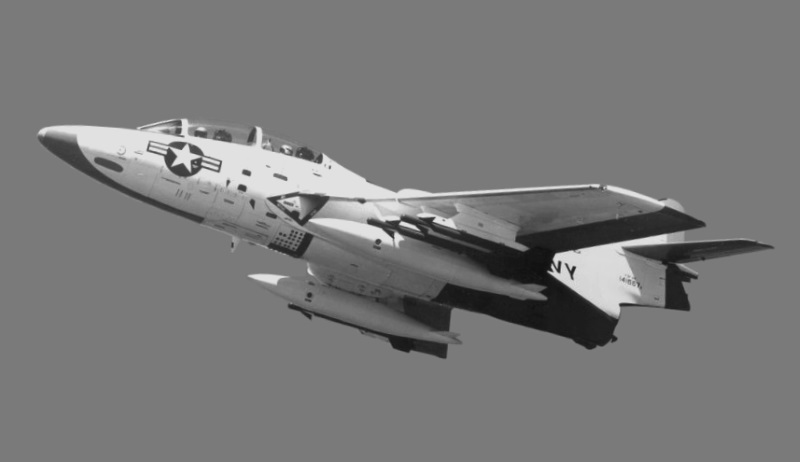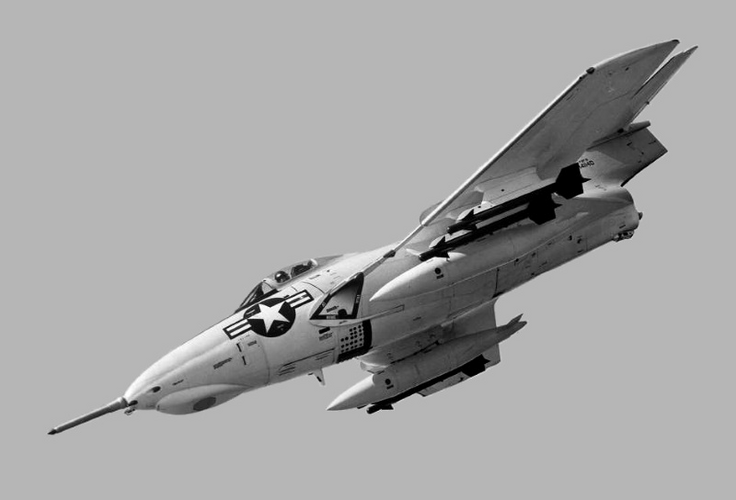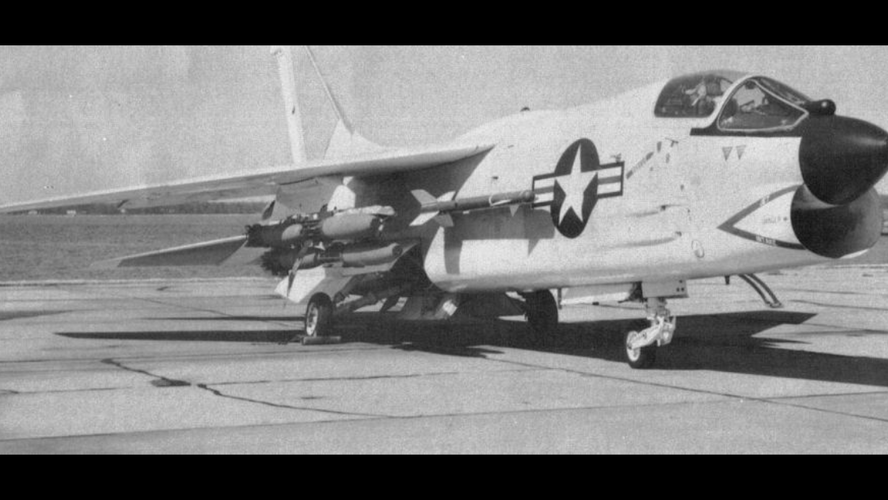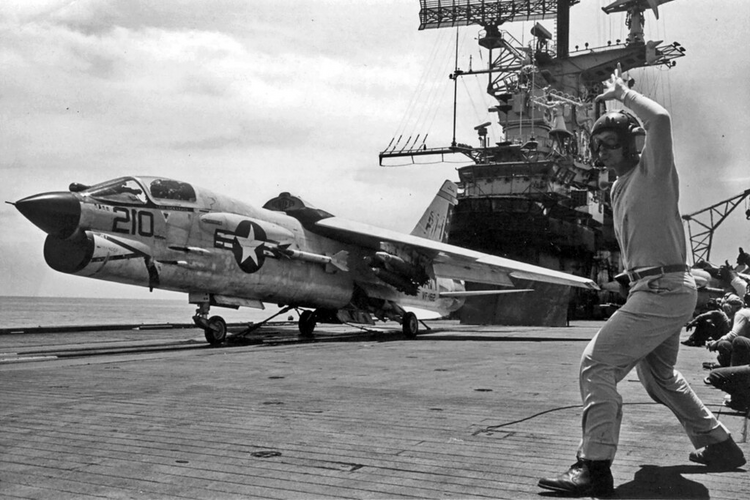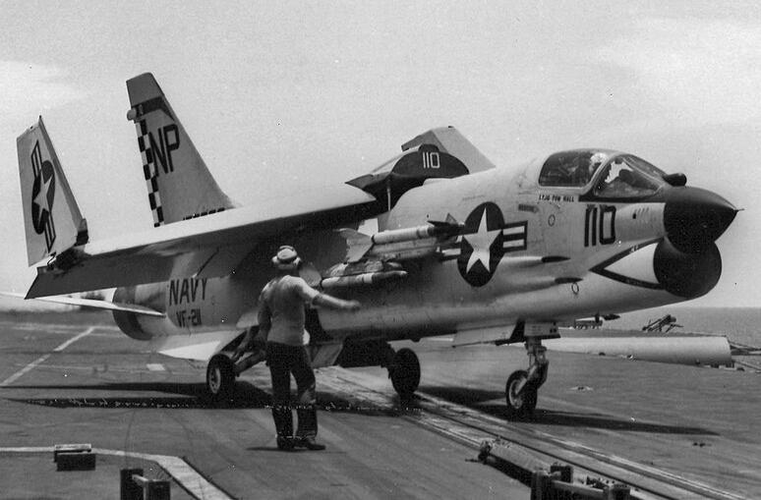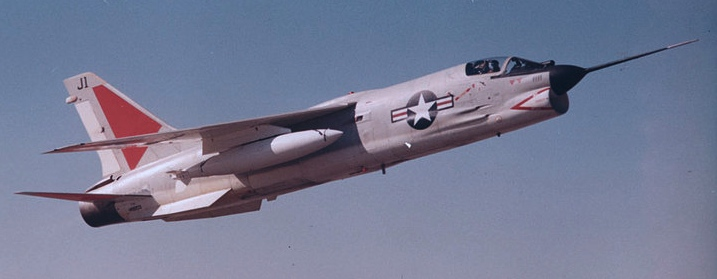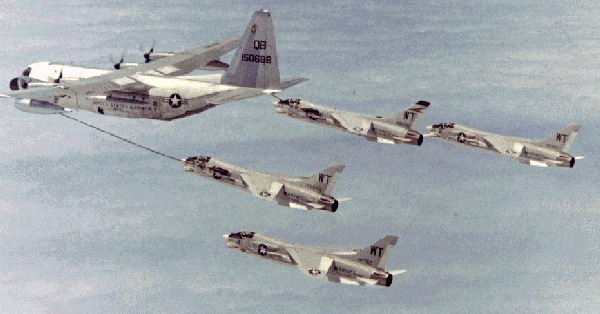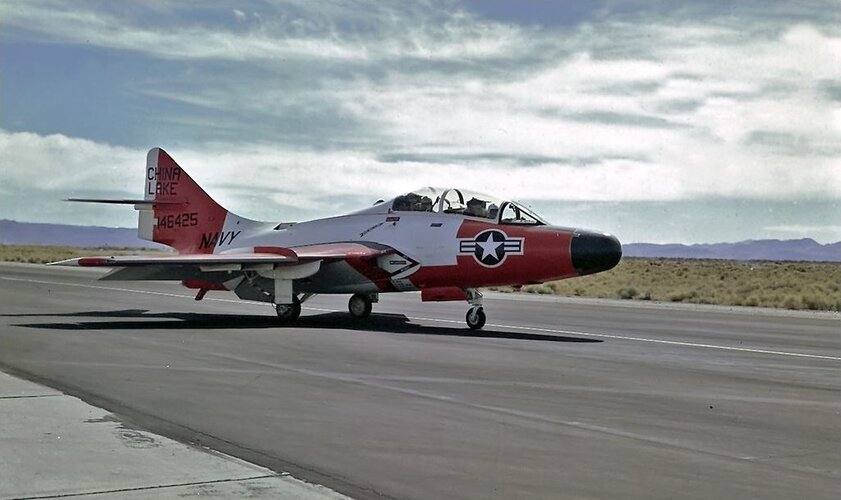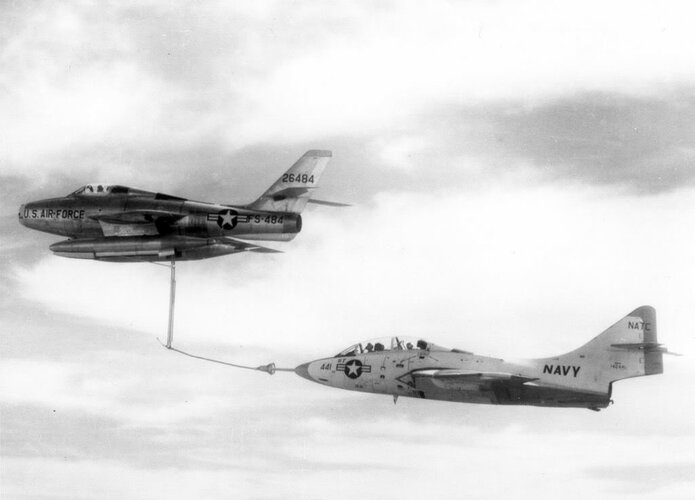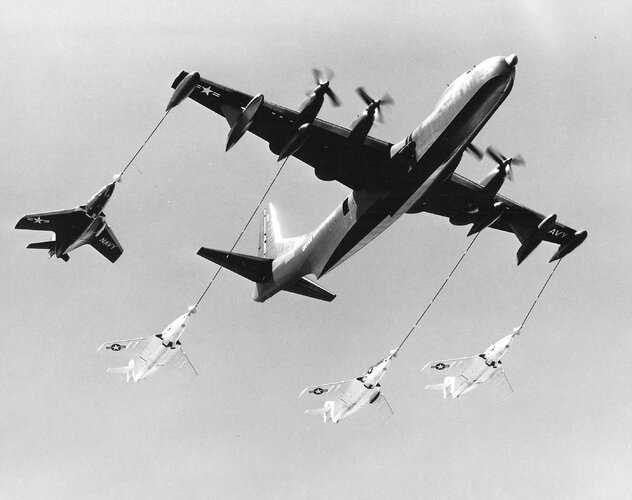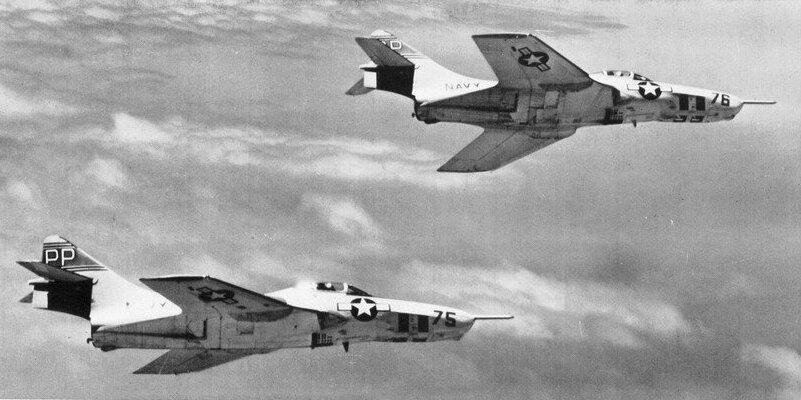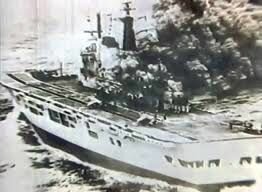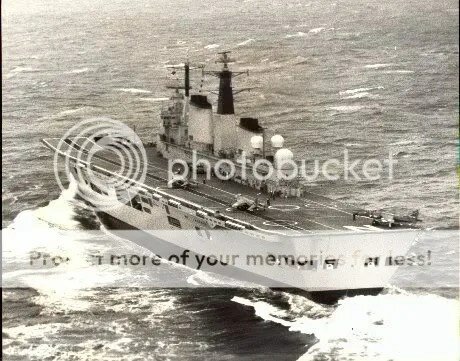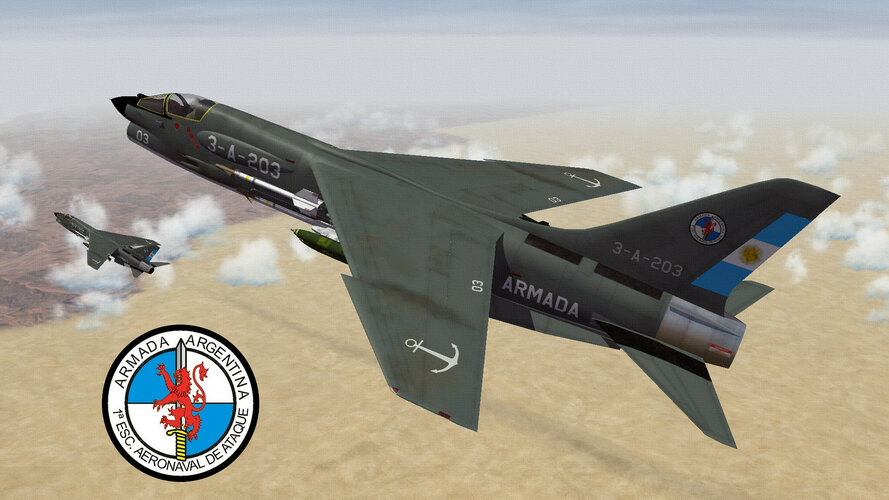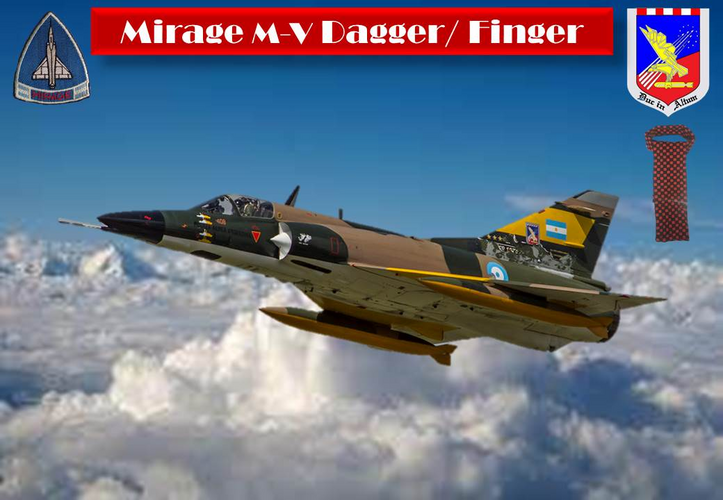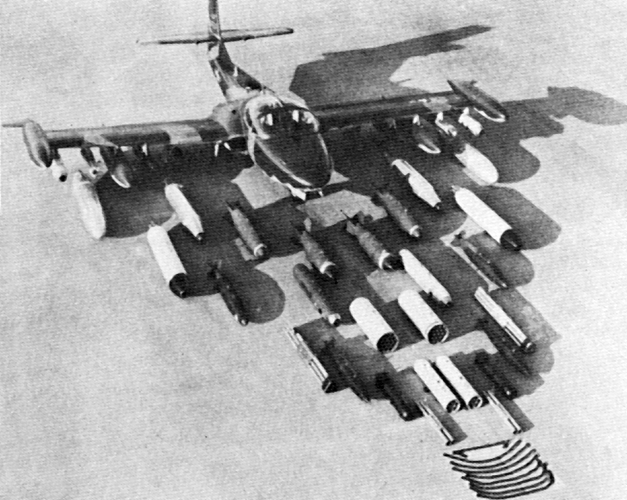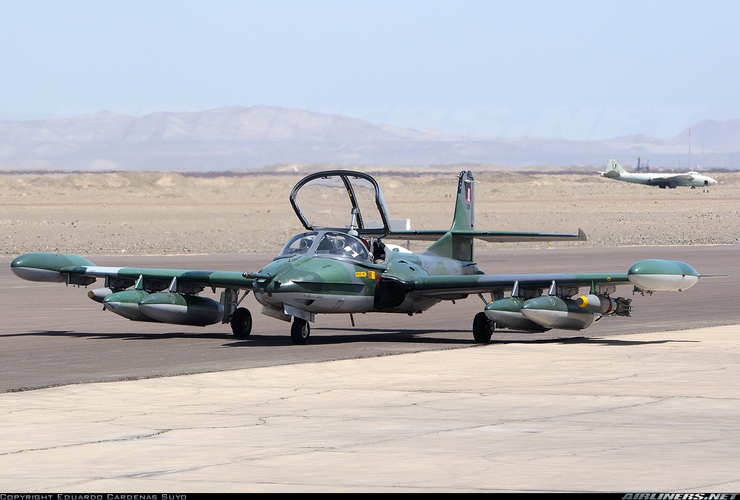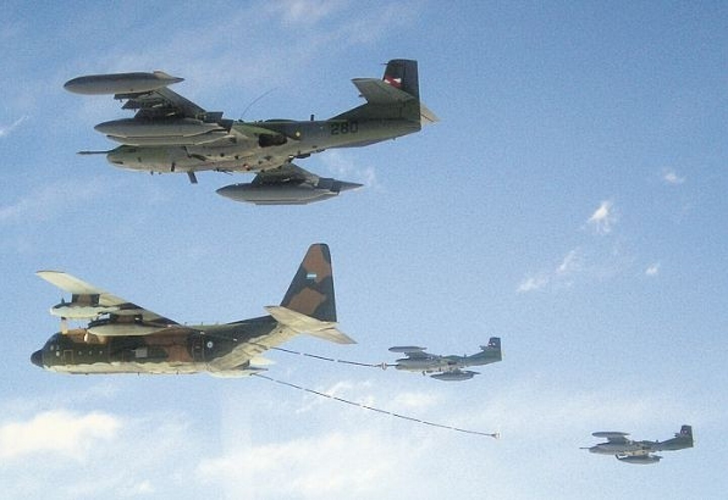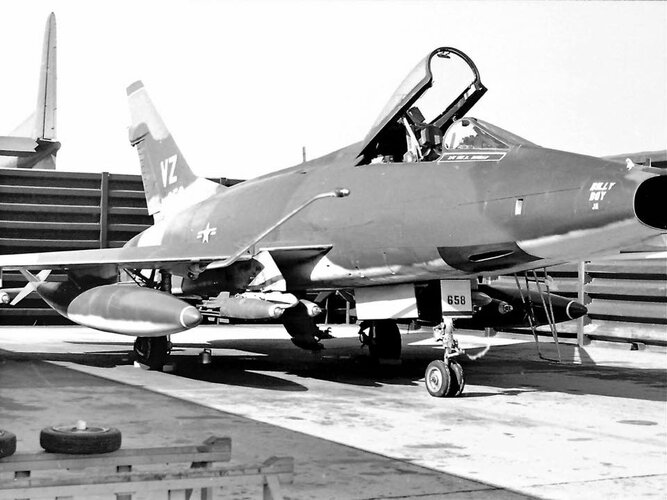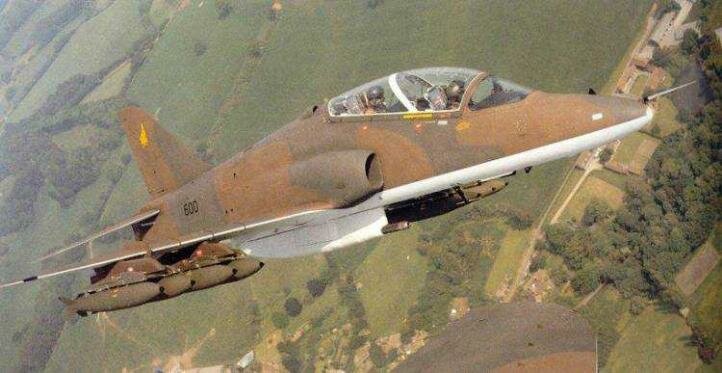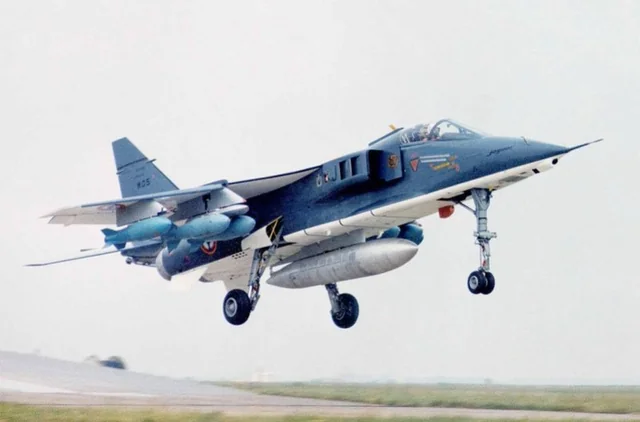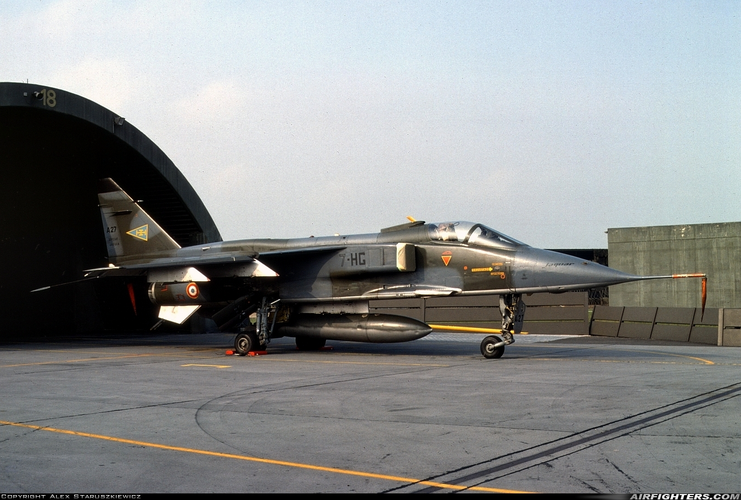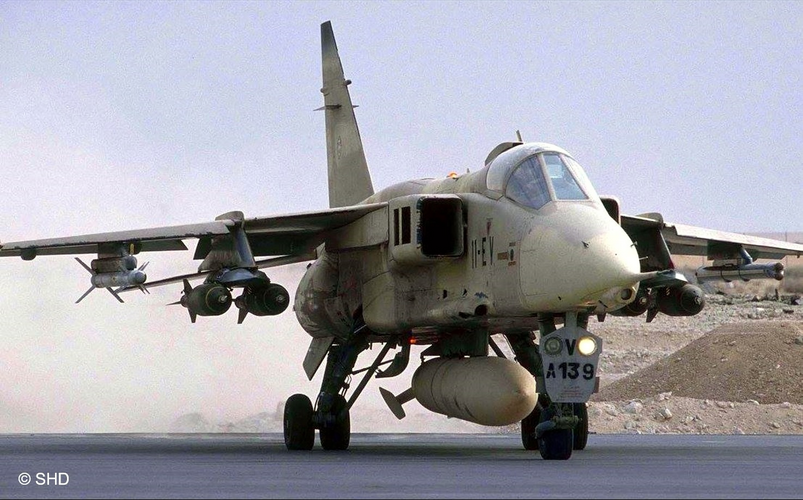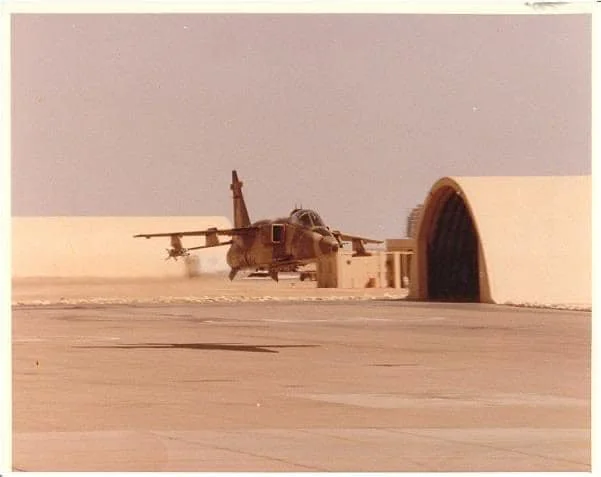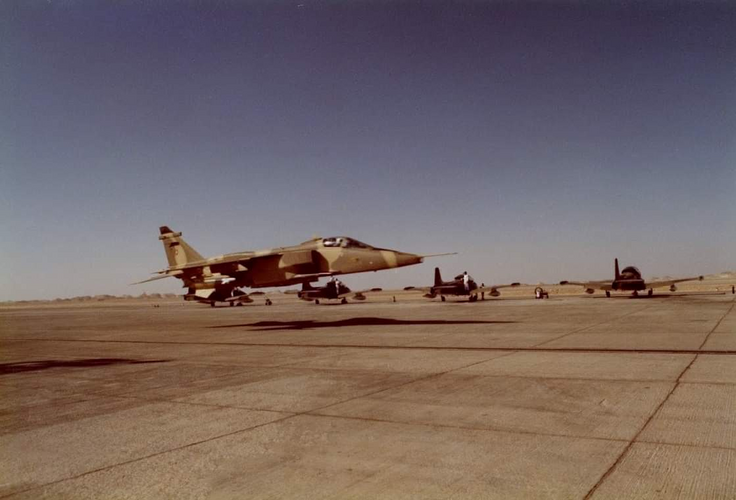The only foreign air arm to operate the Panther was Argentina's Servicio de Aviacion Naval, which received 24 refurbished F9F-2s in 1958. Lack of spares took the type out of service by 1969.
The SdAN also acquired 2 F9F-8T Cougar two-seat trainers in 1962, which were also tested aboard - but again, she needed a steam catapult and more improvements to properly operate them. They were withdrawn from service in 1971.
There were a couple of improvements in the F9F (F-9) Cougar that I always thought should have been followed up on by a lower-rank nation, and Argentina would have been perfect for them.
Late production F9F-8s were fitted with the capability of carrying two Sidewinder infrared-homing air-to-air missile underneath each wing. This feature was retrofitted to many earlier F9F-8s. The first Sidewinder-equipped Cougars were deployed overseas by VA-48 in July of 1956.
A radar-equipped night fighter version of the F9F-8T was proposed by Grumman in 1955. It was to have carried an AN/APQ-50 radar and was to have been equipped with an all-missile armament. However, the performance was considered insufficient to warrant production.
In 1961, Grumman proposed a modernized version of the F9F-8T with updated systems and a Pratt & Whitney J52 turbojet in place of the J48 (the J48-8A engine of the -8 series of Cougars produced 7,250 lb dry, and 8,500 lb with water injection, while the J52-6 produced 8,500 lb dry {in the A-4E in flight testing by mid-1961} and the 9,300 lb J52-8 was in testing {flying by 1963} - the J52 was more reliable, more responsive, and used less fuel than the J48). However, the Navy selected the Douglas TA-4F instead, and the updated two-seat Cougar project was abandoned.
What if Argentina, in 1961, asked for radar-equipped 2-seat F9F-8s with the J52 and new avionics (production of the F9F-8T had ended in 1960, so re-start should be easy) - and maybe some single-seat F9F-8s and F9F-8Bs (these had just been withdrawn from active USN squadrons in 1958-59 (leaving only those in USN & USMC reserve squadrons until 1964).
The F9F-8Bs were F9F-8s converted into tactical nuclear bombers. They were fitted with the Low-Altitude Bombing System (LABS), additional instruments, as well as with the control and arming equipment needed for the nuclear weapon, or "special store" as it was euphemistically called. However, in service most F9F-8Bs were operated as conventional fighter-bombers and were provided with six underwing weapons pylons.
Removing the nuclear control and arming equipment, and re-engining used F9F-8s & F9F-8Bs with the J52 would give a nice air wing.
View attachment 712715

